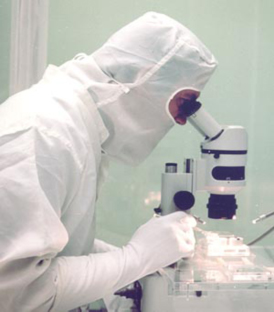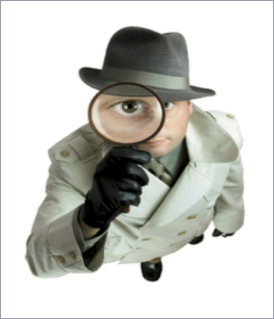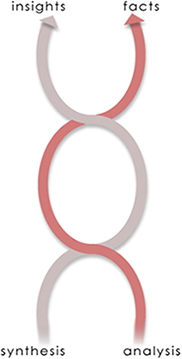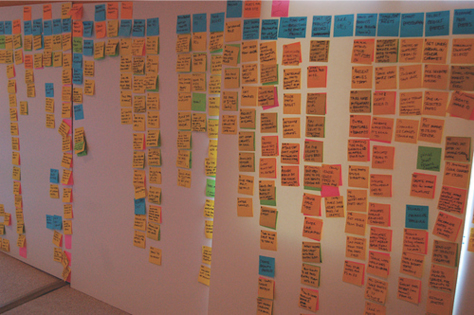Analysis + Synthesis
Great research involves analysis + synthesis.
Synthesis—“The composition or combination of parts or elements so as to form a whole.”—Webster’s
Too often, as Figure 1 represents, we focus purely on analysis—and the identification of facts—and ignore synthesis, which often occurs organically during analysis. As shown in Figure 2, synthesis involves detective work that lets us see the patterns in our data. Synthesis can present itself as a gut feeling that something is right or true when we examine our data and its patterns. (See Steve Baty’s article “Patterns in User Research” for an excellent overview.)


If you conducted the user research, remember this: You spent hours with people asking them questions, listening to them, having conversations, observing behaviors, and empathizing with them. To a certain degree, you know them. If you have a strong feeling about something a participant said or did and can connect that with something another participant said or did, it’s likely you’ve got a budding insight that is worth probing further. Allowing trust-your-gut synthesis can bring forth true insights.
Analysis and synthesis often occur at the same time. We plan and structure our analysis, allowing us to frame the problems, while synthesis is emergent and lets us make connections that identify breakthrough ideas and opportunities, as Figure 3 shows.

If you use the analysis + synthesis approach, you’ll make room for insights to emerge, taking your research beyond pure facts. Still, what do we do with all the data? How do we begin our process of analysis + synthesis? Here are some steps that have worked for me:
- Collect and organize the data. Make your data manageable.
- Mine the data. Identify what you see.
- Sort and cluster the data. Manipulate or reframe your data, as necessary.
- Identify insights. Discuss, articulate, incubate, and socialize your insights.
1. Collect and organize the data.
Either just before you set out to conduct your research or very soon after you start, it’s a good idea to set up a system for organizing the many files you’ll collect—including written notes, sketches, digital notes, photos, audio recordings, and video recordings. A system that works for me involves two levels of organization—one, digital; the other, physical.
Digital Organization
Plan to have the content of all audio, video, and hand-written files transcribed in digital format. Create folders for participants, session dates, or another category that works for your team. I have found organizing by participant to be the best approach.
In each folder, include a participant profile document that outlines who the participant is, including any relevant demographic or segmentation data. This profile should provide a quick scan of information about a participant, as a reminder to team members.
At the end of each day or session, store any and all files pertaining to specific participants in their respective folders, including scans or transcripts of hand-written notes, transcripts of audio files, plus the original audio file itself, photos, and video files.
Physical Organization
Designate a war room—a meeting room, a cluster of desks, or common space—to use over the course of your study. There should be a large wall or whiteboard available in this space.
Create your space. Stick your research goals on the wall, put up photos of the sessions, make your space feel like a physical representation of your study.
At the end of each day or session, conduct a team debrief to consolidate notes, talk about key findings, and discuss any interesting points of synthesis. Capture key findings and points of synthesis on large Post-it notes and stick them on a wall. Conduct a discussion about their meaning and importance.

